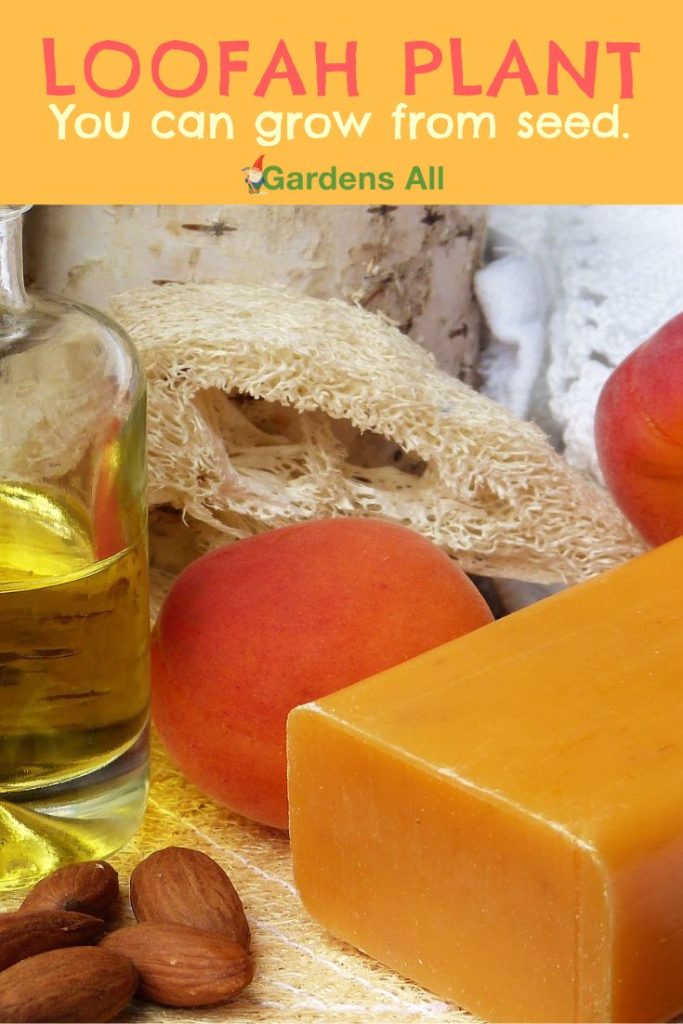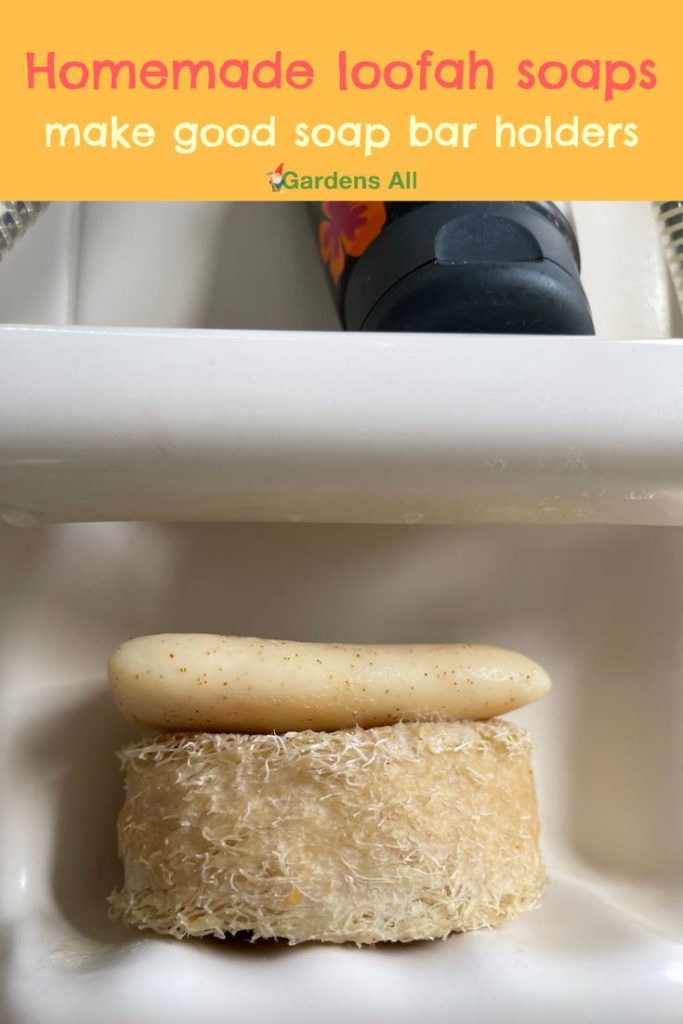The Luffa Soap Sponge Bar
Also called: Loofah and loofa, the amazing luffa gourd can be made into bath and kitchen scrubbies! It makes sense, after all.
Before man made sponges and scrubbies, our ancestors had to use something. They used hard gourds as food receptacles and luffas and ocean sponges for eating and scrubbing! (When they bathed that is)! 😳
A bath sponge you can grow!
This past Christmas was our first year to try making luffa soap, and it was fun, including some trial and error!
My mistake was to try to skip a step. Bad idea. The first batch looked good and smelled great but ended up too hard and scratchy for anything but scrubbing calloused feet. Which it’s actually great for that, so if you need a stiff foot scrubber, then skip the moisten-the-luffa step. Meanwhile, here’s our process.
We REALLY had fun growing and making soaps with this amazing vegetable, though not as excited about the food value, though you can eat luffa.
We saved seeds from our first batch and will definitely grow them again this year, which you can read about in another article linked at the bottom of this one. There you will also see pictures of our luffas growing.

Loving our Homegrown, Homemade Luffa Soap Sponges!
The loofah sponge is great as a “scrubby” and will last through many uses. One particular enhancement is to infuse the sponge with soap. Not only practical, but a very artful and fun project to make your own custom colored, custom scented soap scrubbies.
These images below are from GardensAll member, Kathlyn Cairns, who so graciously sent us some of her luffa seeds! See our article on Growing Luffa


Next, is a quick and efficient video demonstration by HappyMothering. Our videos didn’t turn out so great, so sharing this one instead.
How to Make Luffa Soap
You will need a pre-skinned dried luffa vegetable that you’ve grown or purchased. It’s a lot cheaper to grow, but it’s a climbing vine plant that can take up a lot of space, so if you want to try this first to see if you even like it enough to grow it, you can buy real luffa sponges on Amazon.
12 Simple Steps for Making Loofah Soap
- SOAK luffa in water for approximately 5 minutes
- CUT – using a serrated knife, cut a 1 1/4 inch slice
- PLACE sliced luffa on a piece of parchment paper
- SPRAY with rubbing alcohol to help soap adhere to luffa
- WRAP the parchment paper around around to cradle the luffa
- SECURE parchment paper around the luffa with rubber bands
- MELT 6 oz of soap in a glass measuring cup in microwave
- COLORING – add a drop or two of your choice of food coloring
- FRAGRANCE – add a few drops of essential oil or fragrance and stir
- POUR the soap blend into the loofah soap in the parchment “container” until the soap is covering the luffa. You will see all of the soap filling up the holes and porous areas
- SET – Let luffa soap bars set up. This happens fairly quickly but you can speed it up by placing in fridge
- REMOVE from parchment paper and smooth off any loose flakes and pieces
Now get creative and use different fragrances and essential oil remedies.
Homemade Luffa Soap Ideas
For example, you may want to make a peppermint version to have on hand for bathing with congestion, or a lavender version for soothing relaxation, or a citrus fragrance for morning wakefulness. Or you may prefer to focus on your favorite scents. Having grown up in Hawaii, my wife loves gardenia and plumeria fragrances, so I made one of those for her.
Natural Loofah Soap
We prefer to use all natural vegetable soap making materials for the base and the coloration.
Here’s our second attempt at making luffa soap bars. Our first attempt we skipped the step of soaking the luffa, and that was a mistake as the luffa ended up way too scratchy for bathing, however it was perfect for scrubbing calloused feet!

Homemade Loofah Soap Uses
Once the soap in our homemade luffa soap bars gets used up, we keep these in the shower or by the sink as they work great for soap bar holders.
In the shower or tub the loofah imbued with soap from the resting bar is kept at the ready for scrubbing rough spots, such as feet. By the sink the soap infused luffa soap rest is great for scrubbing hands and fingernails of soil and rough patches from gardening.
After that, slather hands and feet with calendula salve to work wonders on rough, dry and tender skin.

Benefits of Homemade Soaps
See info on growing loofah here.
Homemade soaps are especially beneficial for those with allergies to other soaps. For example, my wife and daughter are both allergic to soy, so I made sure to get a soy-free natural glycerine soap when making our luffa soap bars.
I really enjoyed making this and can see why some folks really get into soap making! If you’re interested in this kind of thing you might also enjoy this article on making lotion bars.
Also, if you’re going to be making more of your own, you may want to grow your own healing herbs and fragrant herbs.
Enjoy and if you make some, please share your photos via email. We love to see them!
G. Coleman Alderson is an entrepreneur, land manager, investor, gardener, and author of the novel, Mountain Whispers: Days Without Sun. Coleman holds an MS from Penn State where his thesis centered on horticulture, park planning, design, and maintenance. He’s a member of the Phi Kappa Phi Honor Society and a licensed building contractor for 27 years. “But nothing surpasses my 40 years of lessons from the field and garden. And in the garden, as in life, it’s always interesting because those lessons never end!” Coleman Alderson

